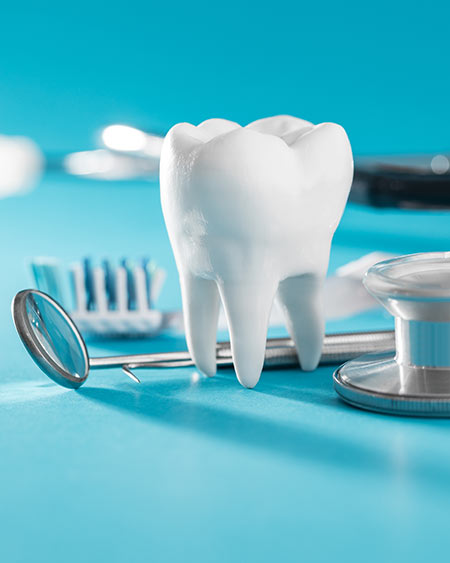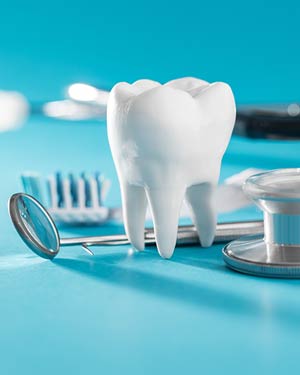Oral Cancer Screening Specialist Serving Mesquite, Dallas TX
Oral cancer screening is a preventive examination performed by a dentist to look for abnormalities or suspicious signs such as red or white patches, sores or ulcers, lumps, swelling, chronic hoarseness, and difficulty swallowing or eating. If you’d like to book an oral cancer screening or are wondering if you need one, contact us at Love 2 Smile Dental. Dr. Divya Nagaraj DDS would be happy to answer any questions that you may have and help you get booked for an appointment at your earliest convenience. We are located at 1050 N Bryan-Belt Line Rd Ste 102, Mesquite, TX 75149.




Table of Contents:
What is an oral cancer screening?
Why are oral cancer screenings so important?
When is an oral cancer screening recommended?
Can a dentist see if you have oral cancer?
One of the most important aspects of treating oral cancer is detecting it early. That’s why dental professionals recommend having regularly scheduled oral cancer screenings; to catch it in the earliest stages, giving you the best opportunity for treatment and recovery.
It’s suggested that adults over the age of 20 should undergo oral cancer screening every three years, while those over 40 should be checked annually. Annual screening is also recommended for those who have additional risk factors – such as those who use tobacco products and/or drink heavily, those with human papillomavirus (HPV), and those who have a family history of cancer.
An oral cancer screening is an examination performed by a medical practitioner, typically a dentist or doctor, to look for early warning signs of cancer in your mouth, throat, tongue, and jaw.
During an oral cancer screening, your cheek lining, the floor, and roof of your mouth, gums, lips, tongue, and tonsils will all be thoroughly examined to ensure they’re healthy. If precancerous signs are detected, you will be sent for further testing and/or treatment by a medical cancer specialist.
The overall goal of an oral cancer screening is to identify the signs of mouth cancer early so that there is a great chance of successful treatment and recovery.
Oral cancer is a common form of cancer that affects people all over the world. Screening is important because it allows medical professionals to catch the warning signs sooner rather than later, which leads to more effective treatment. Being proactive and getting diagnosed early leads to more successful treatments and helps prevent cancer from becoming more serious and/or spreading.
Oral cancer isn’t difficult to diagnose but it has a high rate of fatality because it’s often detected too late in its development. Oral screenings can help prevent this from happening by routinely ensuring that your health is maintained, bettered, and treated as required.
Healthcare providers, most commonly dentists, use oral cancer screenings to identify signs of cancer before symptoms start presenting. When treated early, treatments for oral cancer are typically more successful and yield better overall results.
It’s recommended that adults over the age of 20 undergo oral cancer screening every three years, while those over 40 should be checked annually. Annual screening is also recommended for those who have additional risk factors – such as those who use tobacco products and/or drink heavily, those with human papillomavirus (HPV), those who are exposed to the sun frequently, and those who have a family history of cancer.
It’s important that if you notice any mouth pain, or develop new bumps or lesions in and around your mouth, you contact your healthcare provider as soon as possible to get it checked out. It’s always better to be proactive when it comes to your health instead of waiting till things worsen.
Dentists commonly offer oral cancer screenings as part of a routine exam.
However, it’s important to recognize that oral cancer screenings don’t diagnose cancer. They’re merely tests used to look for signs of cancer. If these signs are detected, then your dentist will refer you to an oncologist for further testing, diagnosis, and treatment.
While your dentist can’t see for certain if you have oral cancer, they’re often the first to identify the warning signs – which is part of what makes annual checkups and routine cleanings so important.
If you’d like to book an oral cancer screening or would like more information about any of our dental services, contact us at Love 2 Smile Dental. Dr. Divya Nagaraj DDS would be happy to answer any questions that you may have. Or, if you’re ready to see one of our specialists, you can book an appointment online at your earliest convenience. We are located at 1050 N Bryan-Belt Line Rd Ste 102, Mesquite, TX 75149. We serve patients from Mesquite Dallas TX, Sunnyvale TX, Forney TX, Balch Springs TX, Garland TX, Rowlett TX, and surrounding areas.


Additional Services You May Like
▸ Emergency Care
▸ Smile Makeover
▸ Invisalign
▸ General Dentistry
▸ Dentures
▸ Root Canal
▸ Dental Fillings
▸ Teeth Whitening
▸ Oral Cancer Screening
▸ Tooth Extraction
▸ Dental Crown
▸ Dental Bridges
▸ Dental Check-ups & Cleaning
▸ Pediatric Dentist
▸ Cosmetic Dentistry
▸ All-on-4 Dental Implants
▸ Dental Implants
▸ Single Tooth Implants



